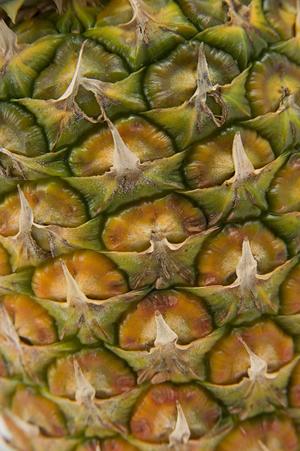Conference resolutions on Farmers' Rights
1989 marks a breakthrough for the negotiations on Farmers' Rights in the FAO. The FAO Conference adopted two resolutions on Farmers' Rights, one of which should provide an important basis for all further negotiations.
In April 1989, the Commission on Genetic Resources held its Third Regular Session, which prepared the ground for the adoption of two resolutions on agreed interpretations of the International Undertaking at the Twenty-fifth Session of the Conference of FAO in November 1989.
Two draft resolutions were presented to and welcomed by the Conference. According to the Conference Report (paragraph 105), the first draft resolution, presented by the Delegation of Spain, was based on the text prepared by the Commission for an agreed interpretation of the International Undertaking. The second one was prepared by the Commission and concerned Farmers' Rights. The draft resolutions, preserving the principle of unrestricted availability of germplasm, recognized the rights of both donors of technologies and donors of germplasm to be compensated for their contributions through the simultaneous recognition of plant breeders' and Farmers' Rights. The Conference recognized that both resolutions were intended to lay the foundations for an equitable and lasting global system for sharing the costs and benefits of the world's plant genetic resources for present and future generations (ibid).
During the ensuing debate on the two resolutions, a few countries made specific proposals for amendments, but it was recognized that such changes needed further detailed review before they could be considered. Several countries expressed their intention to join the Undertaking or to withdraw their reservations should the resolutions be adopted (paragraph 106). Finally, the Conference recognized that these resolutions were the end-result of wide-ranging and intensive discussions and negotiations among many countries, including a non-member of FAO, some non-members of the Commission and some that did not adhere to the Undertaking, and expressed its satisfaction with the draft resolutions (paragraph 107). The two resolutions were adopted by consensus at 29 November 1989 as Resolution 4/89 'Agreed Interpretation of the International Undertaking' and Resolution 5/89 'Farmers' Rights' (paragraph 108), and the Conference decided that they were to be annexed to the International Undertaking (paragraph 109).
Resolution 4/89 endorses that the agreed interpretation is intended to provide the basis for an equitable and therefore solid and lasting global system, and thereby to facilitate the withdrawal of reservations which countries have made with regard to the International Undertaking, and to secure the adherence of others. The Resolution presents the rationale behind the agreed interpretation, before listing its components (paragraph 108):
"1. Plant Breeders' Rights as provided for under UPOV (International Union for the Protection of New Varieties of Plant) are not incompatible with the International Undertaking.
2. A state may impose only such minimum restrictions on the free exchange of materials covered by Article 2.1 (a) of the International Undertaking as are necessary for it to conform to its national and international obligations.
3. States adhering to the Undertaking recognize the enormous contribution that farmers of all regions have made to the conservation and development of plant genetic resources, which constitute the basis of plant production throughout the world, and which form the basis for the concept of Farmers' Rights.
4. The adhering states consider that the best way to implement the concept of Farmers' Rights is to ensure the conservation, management and use of plant genetic resources, for the benefit of present and future generations of farmers. This could be achieved through appropriate means, monitored by the Commission on Plant Genetic Resources, including in particular the International Fund for Plant Genetic Resources, already established by FAO. To reflect the responsibility of those countries which have benefited most from the use of germplasm, the Fund would benefit from being supplemented by further contributions from adhering governments, on a basis to be agreed upon, in order to ensure for the Fund a sound and recurring basis. The International Fund should be used to support plant genetic conservation, management and utilization programmes, particularly within developing countries, and those which are important sources of plant genetic material. Special priority should be placed on intensified educational programmes for biotechnology specialists, and strengthening the capabilities of developing countries in genetic resource conservation and management, as well as the improvement of plant breeding and seed production."
The recognition of Farmers' Rights was clearly motivated by the need to create acceptance for the formulations on plant breeders' rights, particularly among developing countries. Nevertheless, opponents of plant breeders' rights gained recognition of Farmers' Rights in exchange for something that already existed, i.e. plant breeders' rights. As such, this can be seen as a breakthrough for the proponents of Farmers' Rights.
The resolution on Farmers' Rights (paragraph 108, Resolution 5/89) represents a milestone in international negotiations on this topic, as it seeks to outline the contents and implications of this concept. It is therefore quoted in full:
"THE CONFERENCE,
Recognizing that:
a) plant genetic resources are a common heritage of mankind to be preserved, and to be freely available for use, for the benefit of present and future generations,
b) full advantage can be derived from plant genetic resources through an effective programme of plant breeding, and that, while most such resources, in the form of wild plants and old landraces, are to be found in developing countries, training and facilities for plant survey and identification, and plant breeding, are insufficient, or even not available in many of those countries,
c) plant genetic resources are indispensable for the genetic improvement of cultivated plants, but have been insufficiently explored, and are in danger of erosion and loss,
Considering that:
a) in the history of mankind, unnumbered generations of farmers have conserved, improved and made available plant genetic resources,
b) the majority of these plant genetic resources come from developing countries, the contribution of whose farmers has not been sufficiently recognized or rewarded,
c) the farmers, especially those in developing countries, should benefit fully from the improved and increased use of the natural resources they have preserved,
d) there is a need to continue the conservation (in situ and ex situ), development and use of the plant genetic resources in all countries, and to strengthen the capabilities of developing countries in these areas,
Endorses the concept of Farmers' Rights (Farmers' Rights mean rights arising from the past, present and future contributions of farmers in conserving, improving, and making available plant genetic resources, particularly those in the centres of origin/diversity. These rights are vested in the International Community, as trustee for present and future generations of farmers, for the purpose of ensuring full benefits to farmers, and supporting the continuation of their contributions, as well as the attainment of the overall purposes of the International Undertaking) in order to:
a) ensure that the need for conservation is globally recognized and that sufficient funds for these purposes will be available;
b) assist farmers and farming communities, in all regions of the world, but especially in the areas of origin/diversity of plant genetic resources, in the protection and conservation of their plant genetic resources, and of the natural biosphere;
c) allow farmers, their communities, and countries in all regions, to participate fully in the benefits derived, at present and in the future, from the improved use of plant genetic resources, through plant breeding and other scientific methods."
Though this resolution was a milestone, it was not legally binding, nor were the ways in which it was to be implemented delineated. Furthermore, the 'definition' did not actually define the concept. It stated where the concept had arisen and the purpose of Farmers' Rights. What they were rights to, who the rights holders were, and how the rights were to be maintained - these issues were not clarified. Thus we may say that the resolution marked an important beginning, but the actual realization of Farmers' Rights would require a lot of further conceptualization and operationalization.
In 1991 a new annex to the International Undertaking was adopted (C 1991/REP, Conference Resolution 3/91). This time, the FAO Conference stated that the concept of genetic resources being the heritage of mankind, as applied in the Undertaking, was subject to the sovereignty of the States (ibid, paragraph a). This principle of international law was reaffirmed by the Commission on Genetic Resources already at its first meeting in 1985, in an effort to attract further countries to adhere to the International Undertaking: "With regard to Article 1 and 5 of the Undertaking, the commission agreed that the sovereignty of governments over their plant genetic resources should be respected and that reciprocity in the exchange process was included in the substance of the Undertaking" (CPGR/85/REP, paragraph 9). With the new formulations in Resolution 3/91, the FAO members also felt it necessary to state that the conditions for access to plant genetic resources required further clarification (C 1991/REP, Conference Resolution 3/91, paragraph d). This was a highly controversial issue, which caused heated debate. To balance between proponents and opponents and reach to a consensus decision, the Conference again adopted provisions on Farmers' Rights. Building on the negotiations in 1987 and the 1989 resolutions, the Conference decided (ibid, paragraph 3):
"Farmers' Rights will be implemented through an international fund on plant genetic resources which will support plant genetic conservation and utilization programmes, particularly, but not exclusively, in the developing countries."
This fund was to be operated by the donors of genetic resources, funds and technology through the Commission on Plant Genetic Resources. The fund, however, never materialized.
Photo (1): dg
Photo (2): Regine Andersen / FNI
 eport of the Conference of FAO, Twenty-fifth Session, Rome, 11-29 November 1989, C 1989/REP.
eport of the Conference of FAO, Twenty-fifth Session, Rome, 11-29 November 1989, C 1989/REP. FAO, 1991: Report of the Conference of FAO, Twenty-sixth Session, Rome, 9-27 November 1991, C 1991/REP.
FAO, 1991: Report of the Conference of FAO, Twenty-sixth Session, Rome, 9-27 November 1991, C 1991/REP.